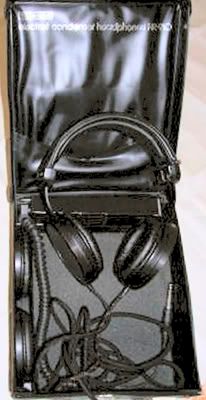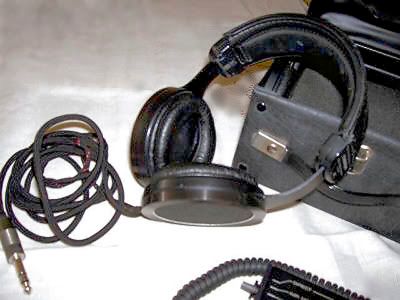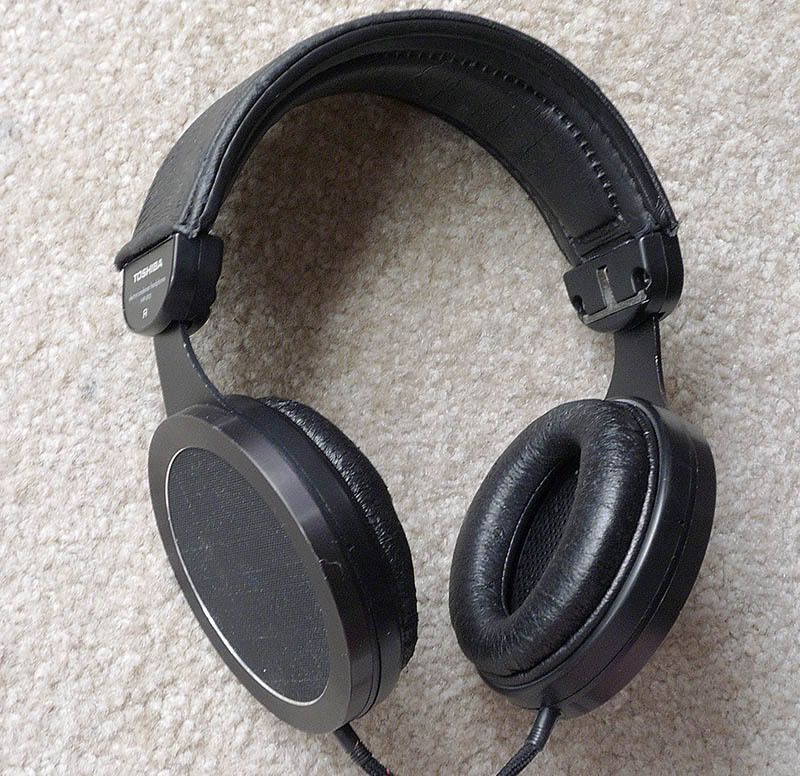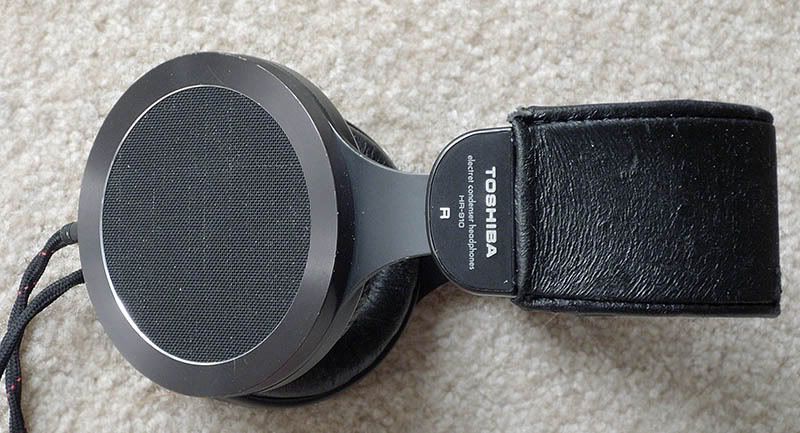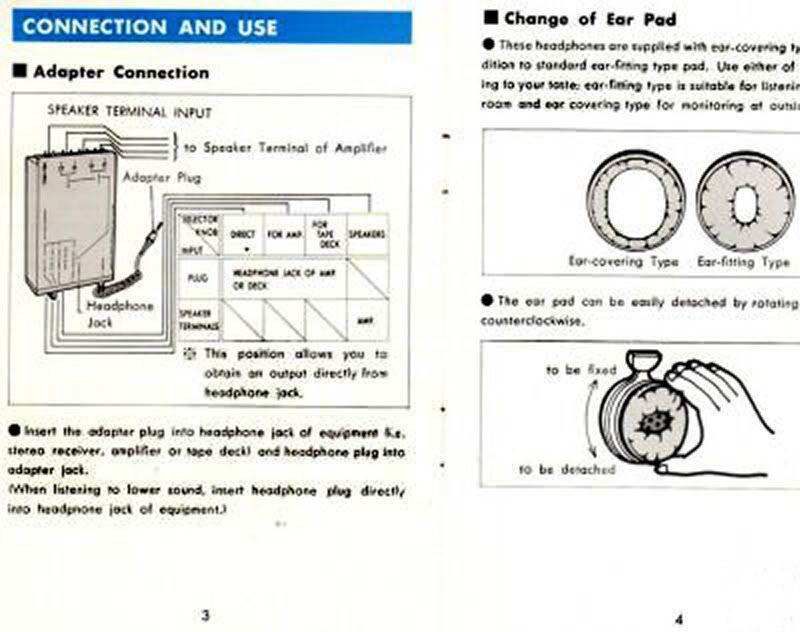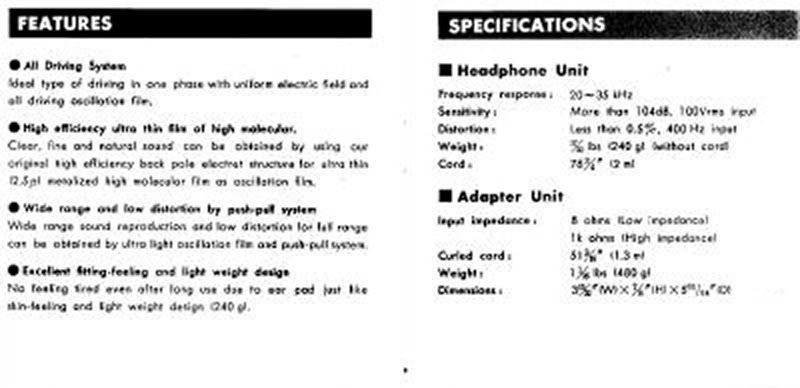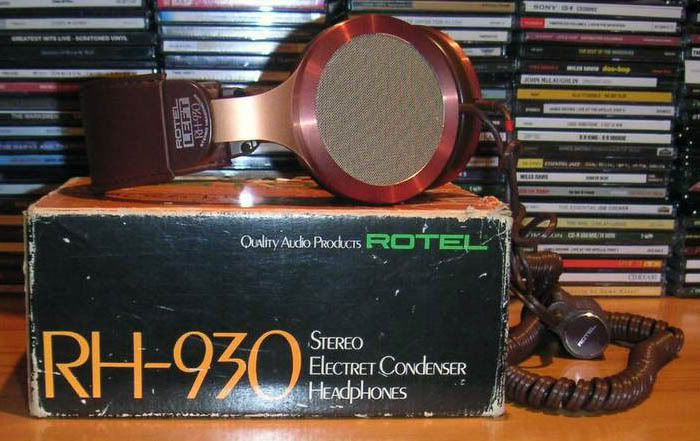wualta
Orthodynamic Supremus
- Joined
- Sep 12, 2004
- Posts
- 4,596
- Likes
- 146
Finally found some photos of these oldsters on the 'net.
I'd read about these as a Toshiba product back in the late '70s and discovered that they used electrets in a unique way that wouldn't compromise the classic "true" electrostatic sound, plus allowing fully portable operation with standard 1/4" headphone outputs, so I said "This is for me!", sat down, folded my hands and patiently awaited their arrival in stores, whilst humming to myself a happy song.
Decades passed.
They never arrived.
Maybe some of you in the EU and Asia have seen them or even own them with the Aurex name. Aurex was Toshiba's luxury brand. The HR-910 was the top of the line:
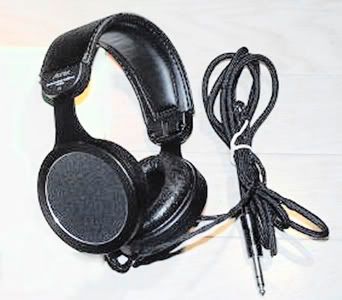
Toshiba Aurex HR-910
This is the accompanying transformer box, which you would presumably plug into a standard 1/4" headphone jack. Note the selections: DIRECT; IMP[EDANCE] HIGH (1kohm)-- FOR AMPLIFIER; IMP. LOW (8 ohms) -- FOR TAPE DECK; and SPEAKERS.

HR-910 adaptor box
There were also a 610, 710 and 810, all of which had the stepup transformers built into a fat 1/4" phone plug.
The Toshiba is interesting both for its engineering and the fact that cosmetically it's very reminiscent of the Pioneer SE-700, a headphone different in almost every possible way but equally weird/unique/ingenious:
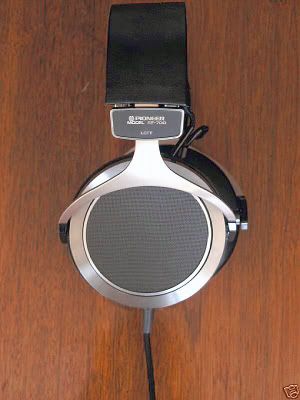 ..........................
..........................
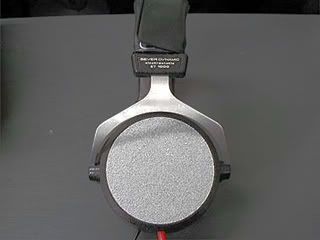
Pioneer SE-700 piezoelectric-film headphone, late '70s....................Beyer ET 1000 electrostatic, ca. 1976
The Japanese website that holds photos of many early electrostats, including the Sony electrets and the Beyer ET1000, is
http://earsp.web.fc2.com/comp/comp.htm
-all photos stolen from webpages and eBay auctions-
.
I'd read about these as a Toshiba product back in the late '70s and discovered that they used electrets in a unique way that wouldn't compromise the classic "true" electrostatic sound, plus allowing fully portable operation with standard 1/4" headphone outputs, so I said "This is for me!", sat down, folded my hands and patiently awaited their arrival in stores, whilst humming to myself a happy song.
Decades passed.
They never arrived.
Maybe some of you in the EU and Asia have seen them or even own them with the Aurex name. Aurex was Toshiba's luxury brand. The HR-910 was the top of the line:

Toshiba Aurex HR-910
This is the accompanying transformer box, which you would presumably plug into a standard 1/4" headphone jack. Note the selections: DIRECT; IMP[EDANCE] HIGH (1kohm)-- FOR AMPLIFIER; IMP. LOW (8 ohms) -- FOR TAPE DECK; and SPEAKERS.

HR-910 adaptor box
There were also a 610, 710 and 810, all of which had the stepup transformers built into a fat 1/4" phone plug.
The Toshiba is interesting both for its engineering and the fact that cosmetically it's very reminiscent of the Pioneer SE-700, a headphone different in almost every possible way but equally weird/unique/ingenious:


Pioneer SE-700 piezoelectric-film headphone, late '70s....................Beyer ET 1000 electrostatic, ca. 1976
The Japanese website that holds photos of many early electrostats, including the Sony electrets and the Beyer ET1000, is
http://earsp.web.fc2.com/comp/comp.htm
-all photos stolen from webpages and eBay auctions-
.


